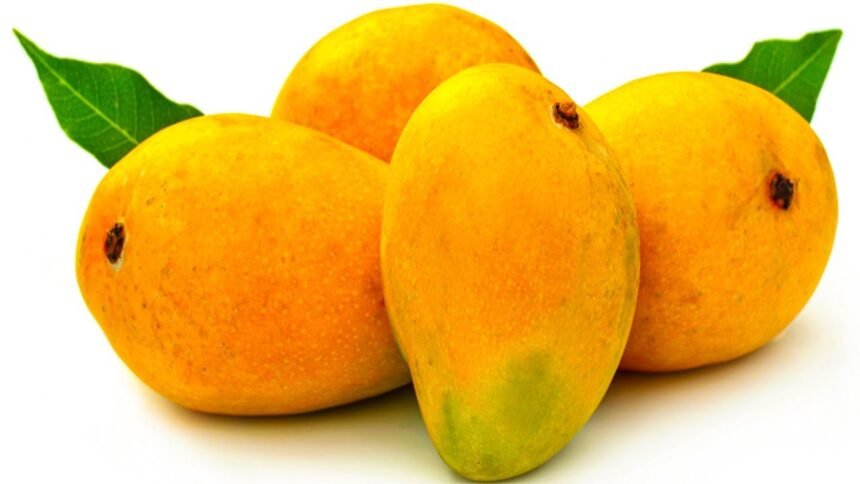Mango Nutritional Value
A cup of mango slices, or roughly 165 grams, offers the following:
Contents
- About 99 calories
- 25g of carbohydrates
- 3g of fiber
- 23g of natural sugars
- 1.4g of protein
- 67% of the daily value (DV) of vitamin C
- 10% DV for vitamin A
- Vitamin E: 9% DV
- 6% DV for vitamin K
- Folate (B9): 18% DV
- 6% DV for potassium
- Copper and magnesium: trace but necessary levels
Strong antioxidant plant substances like beta-carotene, quercetin, and mangiferin are also found in mangoes.
The Health Advantages of Mango


Increases Immunity
- High levels of vitamins C and A fortify the immune system and guard against infections.
Promotes Eye Health
- Vitamin A and beta-carotene help prevent night blindness and preserve healthy vision.
Enhances Digestion
- Mangoes, which are high in fiber and digestive enzymes like amylases, help to support a healthy digestive system.
Beneficial to Skin and Hair
- Vitamin C promotes the formation of collagen, which keeps skin and hair healthy.
Promotes Heart Health
- Magnesium and potassium promote cardiovascular health and control blood pressure.
Helps with Weight Control
- Mangoes are low in fat and, although sweet, can be included in a balanced diet when eaten in moderation.
aids in blood sugar regulation (in moderation)
- Although diabetics should consume entire fruit sparingly, mango leaves and extracts may help control blood sugar levels.
Popular Mango Varieties
India is the greatest producer of mangoes, while they are grown in many other nations as well. Among the well-known types are:
- Rich and fragrant, Alphonso (Hapus) is regarded as the best mango.
- Kesar: Sweet pulp with a saffron hue.
- North Indian dasheri is a juicy, fiberless type.
- Langra: Greenish skin, distinct flavor.
- Tommy Atkins: Popular in the United States, this meat has solid flesh and a mild flavor.
- Sweet and fibrous, Haden & Kent are popular in tropical areas.
Ways to Savor Mango
- As a summertime snack, eat fresh slices.
- Add to milkshakes, juices, or smoothies.
- Add to yogurt bowls or fruit salads.
- Use in sweets such as cakes, puddings, and ice cream.
- Make traditional foods like chutney, mango pickle, and aam panna, which is a refreshing beverage.
- All year long, prepare frozen mango cubes for smoothies.
Precautions
- Natural sugars in excess might cause blood sugar levels to rise.
- Mango peel or sap may cause skin sensitivity in certain persons.
- As part of a balanced diet, it is best consumed in moderation.
Concluding remarks
In addition to being a fruit, mangoes are a tropical treasure that is rich in nutrients and prized for both their taste and health advantages. Mangoes offer sustenance, energy, and immunity whether they are eaten raw, mixed into beverages, or added to sweets. The “King of Fruits” is deserving of a place in every diet, in fact.


